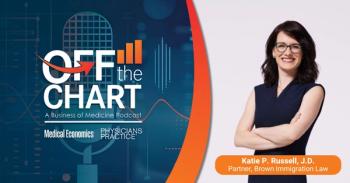
The Female Physician Perspective on Healthcare Today
A recent survey indicates female physicians are more positive about their profession and healthcare reform than their male peers.
I'm not a doctor, but I've represented their interests for more than 18 years working for a professional association of physicians from all specialties and every type of practice setting. It wasn't too long ago that the stereotypical association member was akin to the fictional Marcus Welby, MD, an elderly male private-practice physician. Times certainly have changed.
Shifting Physician Workforce Demographics
Today, there are more women in medicine than at any point in history. In fact, according to The Physicians Foundation, females comprise 33 percent of the physician workforce in the United States, a number that continues to rise as women enter medical schools in record numbers.
Responses from 20,000 physicians in a recent
Issues Facing Physicians Today: The Female Perspective
According to the survey, female physicians are slightly more optimistic than their male counterparts about healthcare today, yet despite this optimism, trepidation still exists among female physicians in regards to elements of reform, such as accountable care organizations (ACOs) and insurance exchanges. The survey reveals that:
• 63.9 percent of female physicians give the Affordable Care Act a passing grade, while only 49 percent of male physicians stand by the reform;
• 41 percent of female physicians are unsure about structure and purpose of ACOs, compared to 28 percent of their male counterparts; and
• A smaller percentage of female doctors participate in exchanges and more females compared to males are unsure of whether the exchanges feature a restricted network of providers.
The Changing Healthcare Landscape
All physicians today are feeling the pressure of rising costs and the plethora of new regulations as the industry moves from fee-for-service to pay-for-value. While the reform law did provide access to health insurance coverage for more Americans, it did little to ensure a stable physician workforce - a vital piece of the healthcare equation.
On the positive side, with a focus on prevention and disease management, care delivery has become more patient-centered. The Physicians Foundation survey showed that 80 percent of physicians describe patient relations as the most satisfying factor of practicing medicine.
When I started working at the Washington State Medical Association in the mid-1990s, 38 percent of our members were in solo practice; today the figure has plummeted to 8 percent. According to the survey, less than 20 percent of physicians nationwide are in solo practice, while the number of physicians in employed practice has jumped to over 50 percent. For the female demographic, 26.7 percent are in solo practice, 26 percent are employed by a medical group, and 32.5 percent are employed by a hospital.
Despite the changes and apparent anxiety in regards to the future of healthcare, 72 percent of female physicians believe that medicine is still a rewarding profession. It's clear that women will play a prominent role in helping to shape the future of healthcare.
Jennifer Hanscomis CEO of the Washington State Medical Association and board member of The Physicians Foundation.
Newsletter
Optimize your practice with the Physicians Practice newsletter, offering management pearls, leadership tips, and business strategies tailored for practice administrators and physicians of any specialty.




